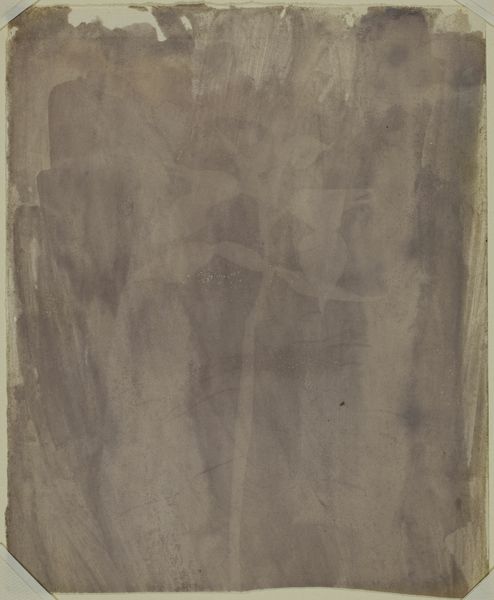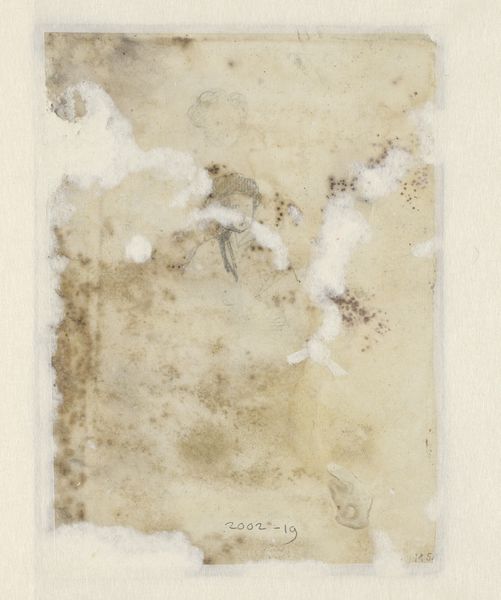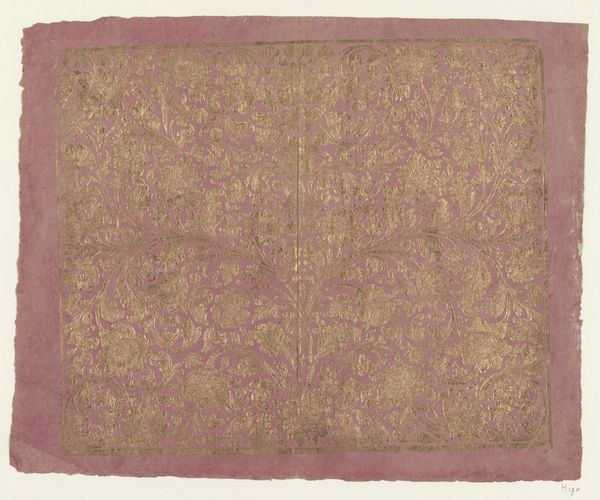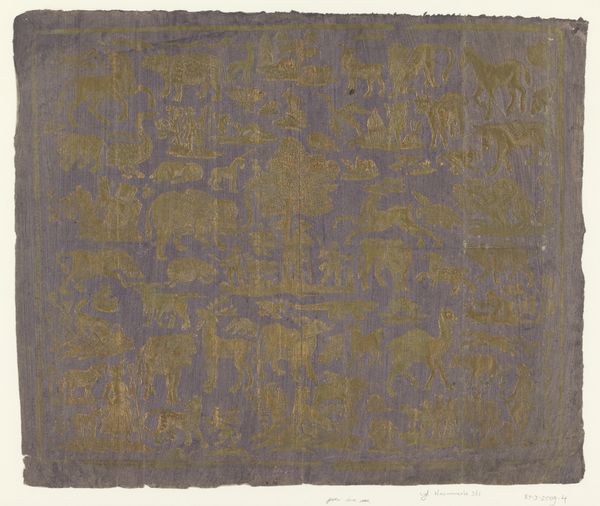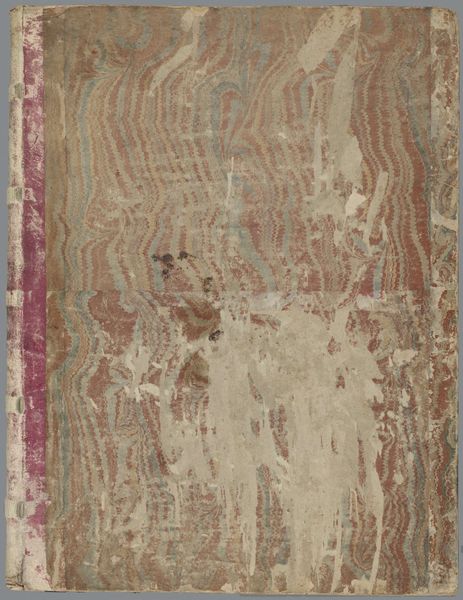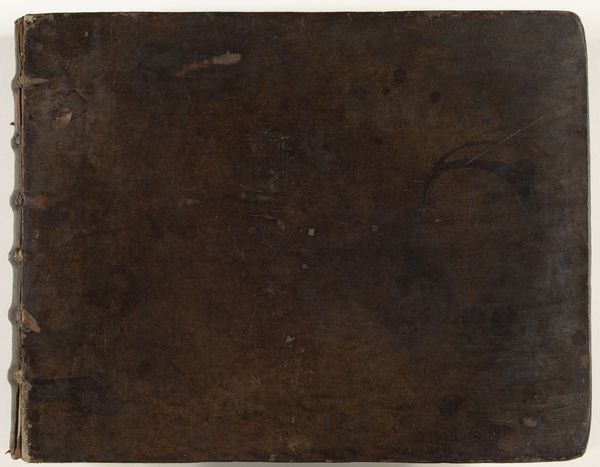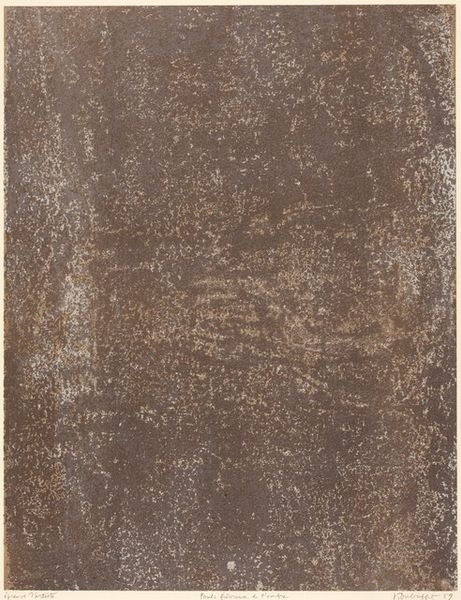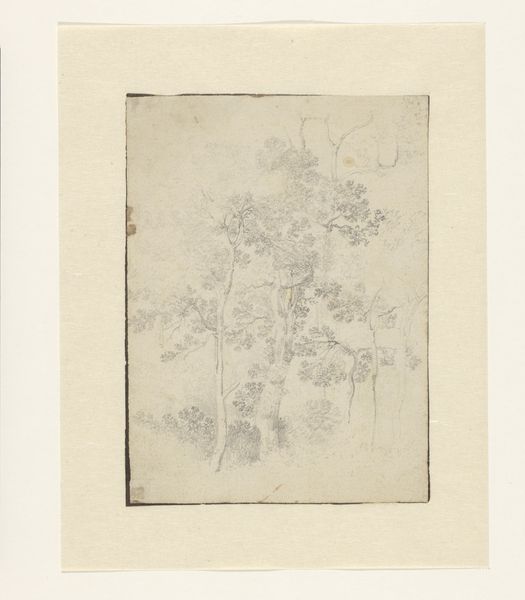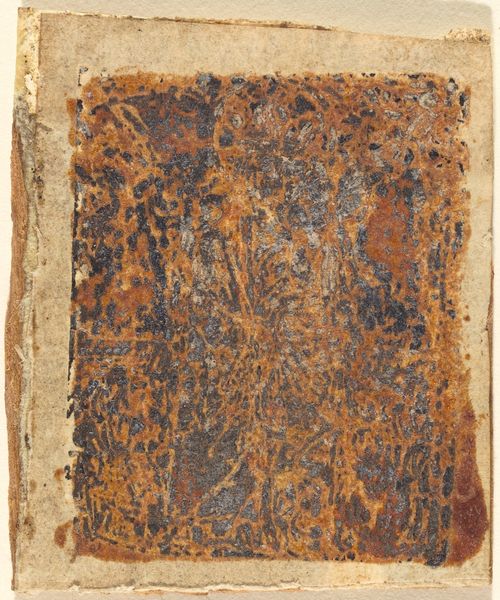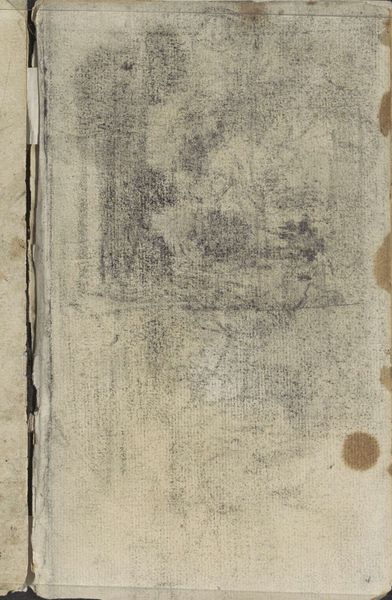
drawing, print, paper, ink, woodblock-print
#
drawing
#
aged paper
#
toned paper
#
water colours
#
ink paper printed
# print
#
paper
#
ink
#
woodblock-print
#
rococo
Dimensions: height 247 mm, width 201 mm
Copyright: Rijks Museum: Open Domain
Curator: This artwork, titled "Blad met bloemen en jachttaferelen," translating to "Sheet with Flowers and Hunting Scenes," is an ink and watercolor print on paper, attributed to Johann Michael Munck and created sometime between 1730 and 1760. Editor: It looks like something unearthed from an old attic! There’s a faded, ghostly quality to the ornamentation; a definite somber mood about it. Curator: Indeed. The toned paper and what appears to be an aged surface contribute to that feeling. The rococo style is evident in the floral scrolls and the hints of what we assume are the “hunting scenes” mentioned in the title, rendered with a delicate, almost ethereal quality. Consider the intentional use of space, where the floral elements cascade to meet one another with rhythmic beauty. Editor: "Rhythmic beauty," perhaps. Though the scenes suggest something about the time it was made, revealing something of courtly culture in a time defined by elaborate excess for those privileged enough to indulge in the aesthetic pleasures of the era. Look at the way the hunting motifs subtly interact, depicting the lifestyle and taste for sport reserved only for wealthy landholders. Curator: An astute observation. Still, it would seem Munck's focus remains on line and form rather than narrative. We see a sophisticated employment of contrasting values, from the lighter floral details to the dark foundation to imply volume. There are underlying symmetries, particularly in the arrangements of flowers. Editor: While form remains a key part of interpreting artistic intentions and aesthetic pleasures, we mustn't diminish the image’s broader commentary regarding the values of the time, and consider them to be inherently exclusive and hierarchical. These prints existed as markers of status, illustrating the means and tastes of wealthy patrons to a broad viewing audience. Curator: A perspective that offers contemporary interpretations to a work with roots in the distant past, yes, thank you. Ultimately, a dialogue emerges that asks us to consider not only the visual appeal, but also its sociohistorical ramifications. Editor: Precisely. Art always mirrors power in complex, intertwined ways. It allows us to probe even an eighteenth-century floral arrangement and to consider questions of inequity and cultural authority through time.
Comments
No comments
Be the first to comment and join the conversation on the ultimate creative platform.

